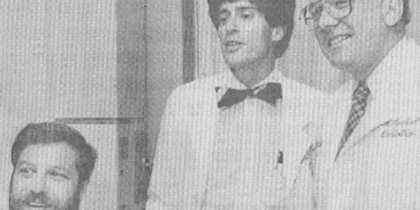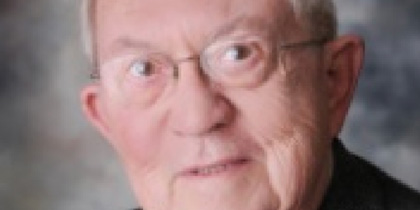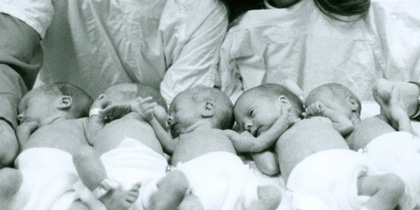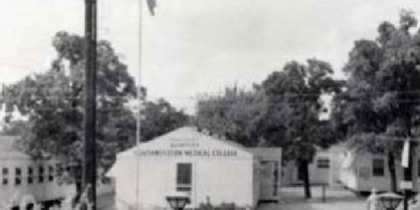History of Pediatric Cardiology
1939 Beginnings
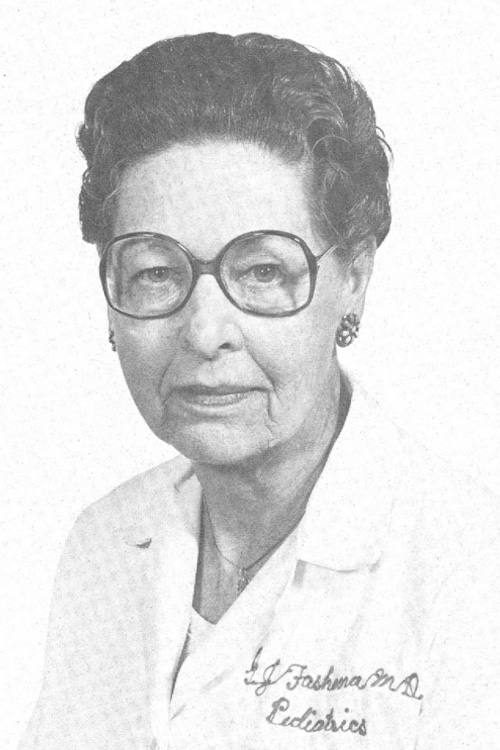
Children’s Medical Center initiated a modest cardiovascular program in 1939. At that time, Gladys Fashena, M.D., one of the first clinical faculty members, established a clinic through the Richmond Freeman Memorial Clinic so that patients with cardiac murmurs could be referred for work-up. Although she had been told that rheumatic fever did not occur in Texas, many patients presented with murmurs sounding suspiciously like mitral insufficiency. Her work established that rheumatic heart disease did indeed occur in the Dallas area, although rheumatic polyarthritis was uncommon.
Cardiac Surgery Breakthrough
Later in 1939, two surgeons performed the first successful ligation of patent ductus arteriosus in Boston. This first step in surgical correction of a cardiovascular lesion helped rapidly develop cardiac surgery and pediatric cardiology. At Freeman Clinic, surgeon J. Warner Duckett, M.D., visited Boston to learn the new technique and soon implemented the procedure here. To handle the swift influx of cardiac patients, Henry Montgomery, M.D., joined Dr. Duckett’s group in private practice to assist in the operating room and perform experimental vascular surgery in the Southwestern Medical School lab.
1945-1955 Advances
In 1945, Johns Hopkins performed a palliative cardiovascular operation to relieve “blue baby sickness,” then doctors in Boston and Sweden surgically corrected coarctation of the aorta. Advances in vascular surgery, anesthesia, and cardiology transformed this specialty, but the boom of new cardiologists and surgeons had limited diagnostic tools.
Doctors relied on:
- Careful medical history
- Physical examination
- Special attention to heart sounds and murmurs
- Cardiac x-rays and fluoroscopy
- Electrocardiography
Despite challenges, surgeons at Children’s conducted 218 cardiac operations with excellent success rates by 1953.
Named Regional Cardiac Center
Funding problems persisted even though most physicians and surgeons donated their services. Then, the United States Department of Health, Education and Welfare (HEW) ruled to include cardiovascular patients in the State Crippled Children’s Program. After an inspection to find the best of all North Texas cardiac programs, HEW designated UT Southwestern/Children’s its Region VI cardiac center.
All indigent patients were referred here for treatment. HEW funded all patient care, as well as cardiac center staffing and medical equipment. More pediatric cardiac patients attracted more newly trained physicians, further increasing the capacity for research and development.
Cardiac Catheterization Program
The mid-1950s, a cardiac catheterization program developed. It focused on measuring pressures and obtaining blood samples from various chambers of the heart under x-ray visualization. This groundbreaking program relied on:
- A special suite of rooms with sophisticated x-ray equipment
- Dedicated laboratory and working space for the staff
- A physician director fully trained in this new technique
Katherine Willis, M.D., a graduate of Southwestern Medical College, specialized in pediatrics, internal medicine, and served a fellowship in cardiac catheterization. The cardiac cath program also provided valuable training opportunities through its three-year HEW cardiac fellowship, and potential fourth-year fellowship. Pediatric cardiology and CVICU attendings play active roles in educating fellows who rotate through the Heart Center units.
Open-Heart Surgery in Dallas
Though most congenital cardiac defects could not be repaired without intracardiac surgery, doctors tried different modalities with less than perfect outcomes. In the early 1950s, Minnesota clinicians improvised a heart-lung substitute using the patient’s father as a “living pump.” After these procedures proved successful in subsequent patients, cardiac centers nationwide began research and development on a non-human heart-lung machine. In 1957 at St. Paul hospital, Ben Mitchell, M.D., and Milton Davis, M.D., used a jointly developed pump to perform the first open heart surgery in Dallas. Similar procedures at Baylor, Parkland, and Methodist hospitals followed, including one at Children’s in 1964.
1960s Key Developments
During the 20-plus years between the first closed heart procedure performed at Children’s and the use of sophisticated open-heart techniques, many milestones were recorded:
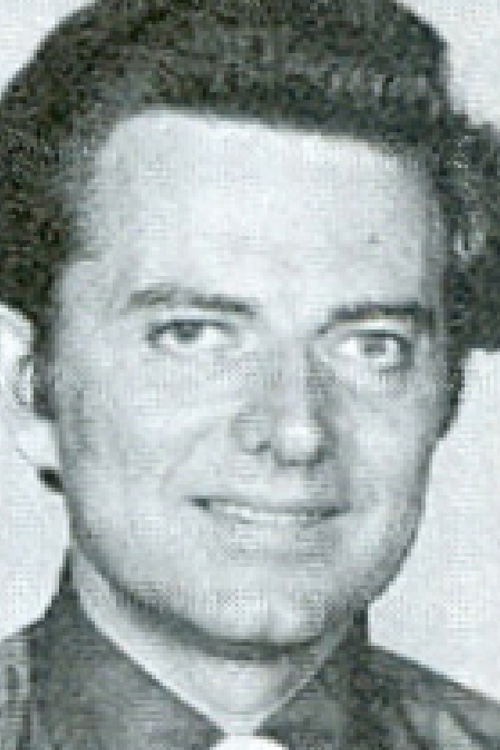
- Significant growth in the pediatric faculty and student body at Southwest Medical School
- Increased patient load at Children’s
- Expanded house staff
- Larger new building for Children’s adjacent to the medical school and Parkland Hospital
- New surgical area with cardiac OR
- New cardiac catheterization laboratory
- The need for pediatric cardiologists drew physicians to join as full-time members of the cardiology division:
- Walton Gersony, M.D.
- William W. Miller, M.D.
- David E. Fixler, M.D.
- Pennock Laird, M.D.
- Edgar Newfeld, M.D.
- Mark D. Parrish, M.D.
- Lynn Mahony, M.D.
- Nancy Ayres, M.D.
- Tim Feltes, M.D.
- Sarah Blumenschein, M.D.
- Ellen Weinstein, M.D.
- Thomas Zellers, M.D.
- Resai Bengur, M.D.
- William Scott, M.D.
Thoracic and Cardiovascular Division Established
Many surgeons who opened offices in the Dallas area also trained in thoracic and cardiovascular surgery, some joining the medical school clinical faculty and maintaining surgical privileges at Children’s. By the early 1960s, UT Southwestern obtained a full-time academic head of the Division of Thoracic and Cardiovascular Surgery – Hugh E. Wilson, III, M.D. Dr. Wilson contributed to the cardiovascular program at Children’s by being an innovative surgeon and a gifted teacher.
Subsequently, other noted cardiovascular surgeons joined the program:
- Maurice Adam, M.D.
- Winfred Sugg, M.D.
- Roger Ecker, M.D.
- Mel Platt, M.D.
- Larry Mills, M.D.
- Tracy Schreiber, M.D.
- Steve Leonard, M.D.
Late 1970s-1980s Innovation
In January 1978, Hisashi Nikaidoh, M.D., joined the as the first experienced cardiac surgeon who limited his practice to pediatric cases, working full time at Children’s. During the 1980s, Dr. Nikaidoh introduced several innovative procedures to the Dallas medical community:
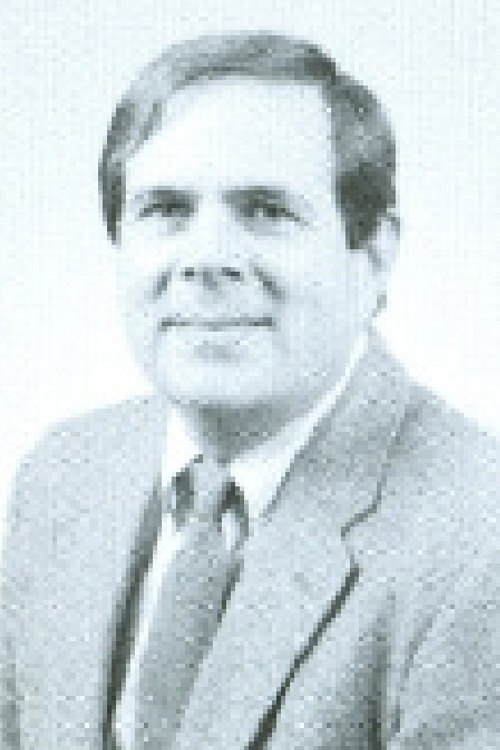
- Use of homograft (donor arteries) for pulmonary atresia
- Fontan procedure for single ventricles
- Arterial switch procedure and translocation procedure for transposition
Experienced heart transplant surgeon, W. Steves Ring, M.D., became Chief of thoracic surgery at the medical school in 1988. He performed the first heart transplant on a six-month-old infant at Children’s. William Weaver Miller, M.D., served as the Director of the Division of Cardiology at UT Southwestern from 1970-1976.
1988-2004 Dynamic Leadership
David Fixler, M.D., directed the Division of Cardiology at UT Southwestern from 1976 to 2004. During his tenure in 1986, the college received contributions by the David Bruton, Jr., Charitable Trust and the Harry S. Moss Heart Trust. That funding enabled the development of an institute at Children’s dedicated to caring for families of children with heart disease. The Frank S. and Mary Jane Ryburn Heart Institute opened in 1990.
By the time Dr. Fixler stepped down as Division Director, pediatric cardiology division stats included:
- 14 faculty
- Five post-doctoral fellows
- 700-plus annual inpatient consultations
- More than 5,600 outpatient evaluations
2000 and Beyond
William Scott, M.D., a member of the pediatric cardiology faculty since 1990, became Division Director in 2006. Under his direction and moving forward, the division had:
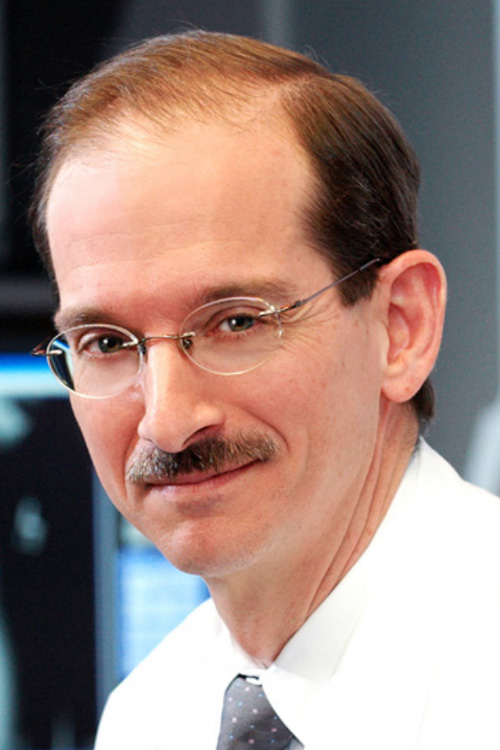
- 23 faculty members and nine fellows
- Heart Center with a 26-bed CVICU and 22-bed telemetry/step-down unit
- More than 2,300 medical patients and 500 surgical patients
- 348 open surgeries and 10 cardiac transplants
- More than 7,800 patient evaluations in the outpatient clinics at Children’s Dallas and the Children’s Ambulatory Care Pavilion in Plano
- Ongoing commitment to advancing clinical and basic research
- Faculty involved in numerous NIH- and March of Dimes-supported projects
Spotlight on Gladys Fashena, M.D. 1939-2000
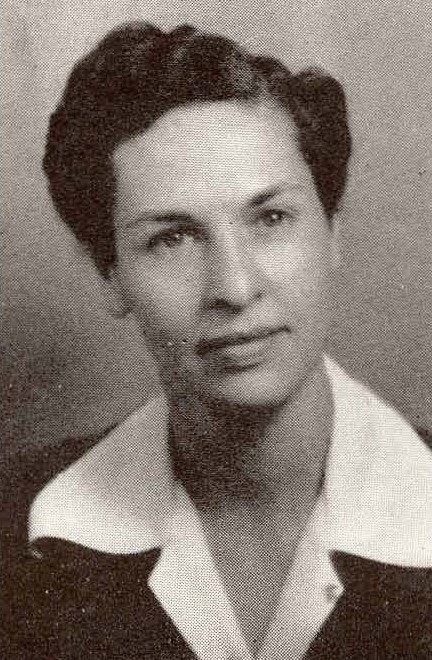
One of the first clinical faculty members at the new Southwestern Medical College, Gladys Fashena, M.D., blazed trails in pediatrics. She worked her way through school to earn a bachelor’s degree from Hunter College, a master’s degree from Columbia University, and finally a medical degree at Cornell Medical School in 1934. Dr. Fashena joined the Baylor Medical College faculty in 1939. When Baylor moved from Dallas to Houston, she remained in Dallas to inaugurate UT Southwestern. She stayed through her retirement nearly 40 years later.
Among her many accomplishments:
- Among the first to understand that newborns who were blue had congenital heart problems.
- Recruited the first Texas surgeon to operate exclusively on children’s hearts
- Established the pediatric cardiology department at Children’s Medical Center of Dallas
- First full-time member of the pediatric faculty
- Named a full professor in 1949
- Designated a Piper Professor, establishing her as one of 10 outstanding college teachers in Texas, in 1974
- First female president of the Dallas County Medical Society in 1976
- Held the title of professor emeritus after retirement until her death in 2000

